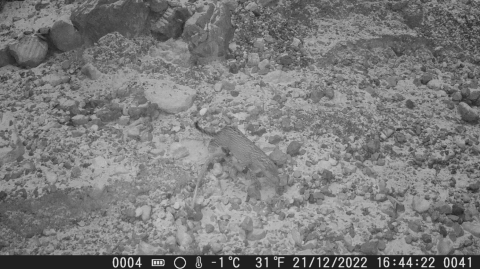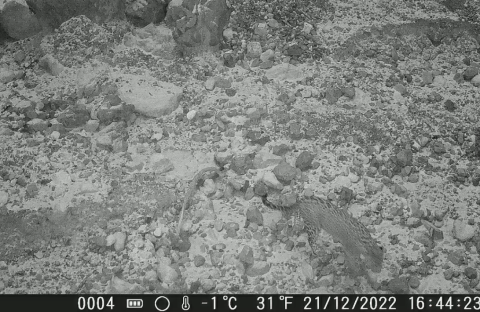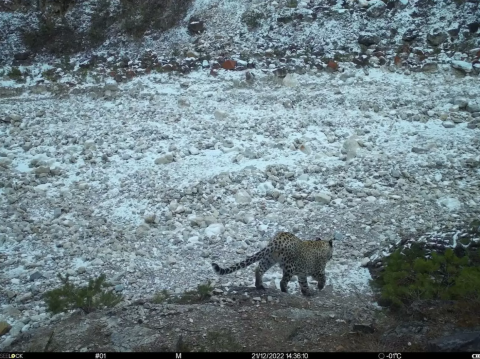
The Persian leopard (Panthera pardus tulliana, also known as Caucasian leopard) confirmed its stay on the territory of the republic, having been captured in photographs of the camera traps of one of the protected areas.
When checking the cameras installed on the territory of the Khunzakhsky Nature Park, inspectors found pictures of the Red Book predator - the Caucasian leopard. Presumably this is a male.
Dagestan is included in the historical range of these animals, however, in the middle of the last century, the entire population of leopards in Russia was completely exterminated by humans. In 2005, IEE RAS and the World Fund for Nature developed the Program for the restoration of the Caucasian leopard in its natural range and is implementing it with the support of the Russian Ministry of Natural Resources and partners.
Since 2016, Caucasian leopards have been released on the territory of the Caucasian Reserve and in North Ossetia. In Dagestan, the World Fund for Nature is supporting the monitoring of potential habitats with camera traps, as well as educating the local population in mountainous areas, since the Republic is considered as a potential release site for leopards. With the help of the Foundation's camera traps, it was possible to confirm the presence of the predator in Dagestan.

The program for the restoration (reintroduction) of the Caucasian leopard in the Caucasus is being implemented by the Ministry of Natural Resources of Russia with the participation of the Sochi National Park, the Caucasus Nature Reserve, the World Fund for Nature, IEE RAS, the A.K. Tembotov Institute of Ecology of Mountainous Territories RAS, Moscow Zoo, as well as with the assistance of the International Union for Conservation of Nature (IUCN) and the European Association of Zoos and Aquariums (EAZA).

REFERENCE:
The Persian leopard disappeared from the wild in the Caucasus in the 1950s. As a result of poaching, the extermination of predators and their food base, not a single leopard remained on the territory of the Russian Caucasus. Since then, no cases of cubs born in the wild have been recorded.
In order to return the symbol of the wildlife of the Caucasus to its historical range, experts from the World Fund for Nature and the Russian Academy of Sciences developed a program for the restoration of the Persian leopard in the Caucasus by breeding it in captivity and subsequent reintroduction.
• 2005 - The World Fund for Nature und and IEE RAS developed the Program for the restoration (reintroduction) of the Persian leopard in the Caucasus.
• 2007 - The program was approved by the Ministry of Natural Resources and Ecology of the Russian Federation, since 2009 the Program is personally supported by the President of the Russian Federation V. Putin.
• 2007-2009 – With the support of the World Fund for Nature, the Center for the Restoration of the Persian Leopard was built in the Caucasus (in the Sochi National Park).
• July 15, 2016 - the first release of 3 leopards into the nature of Russia in the territory of the Caucasian Reserve.
• 2018 – release of 2 leopards in North Ossetia and 1 in the Caucasian Reserve.
• 2020 - release of 2 leopards in North Ossetia and 2 in the Caucasian Reserve.
• 2022 – release of 3 leopards in North Ossetia.
Related materials:
Online publication "Dagestanskaya Pravda": "The Persian leopard was again captured in
Dagestan"
Republican Information Agency: "In the natural park of Dagestan, camera traps recorded the
Persian leopard"
